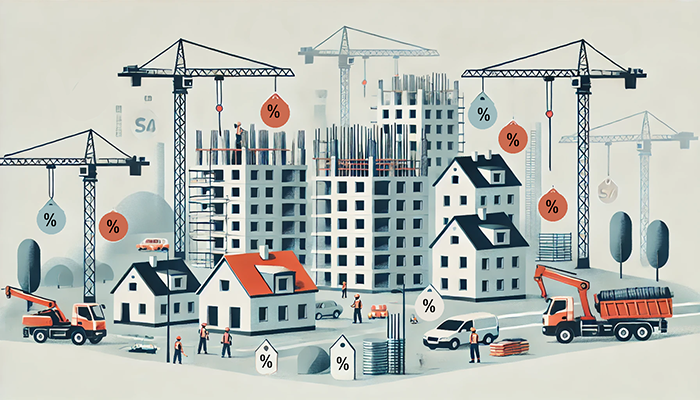Strong start but possible slowdown for Romania’s construction cector in 2025
Romania’s construction sector saw significant growth in the first four months of 2025, with activity increasing by 8.5% compared to the same period in 2024, according to analysis by Colliers. Infrastructure projects were the main driver of this growth, recording a 15.5% rise, while residential construction posted a moderate recovery of around 4%. However, non-residential construction, which includes office, industrial, and commercial projects, declined by nearly 2%, reflecting weaker demand and growing caution among private investors.
Confidence levels among construction firms, as measured by Eurostat surveys, have fallen to a three-year low. Nonetheless, Colliers notes that while optimism has declined, sentiment is still well above the levels recorded during the initial phase of the pandemic or previous economic downturns. This suggests that industry participants currently anticipate only a mild slowdown rather than a severe downturn.
The sector’s early momentum in 2025 was also reflected in employment figures, which reached a record high in April with nearly 460,000 people working in construction. This growth highlights sustained demand for skilled workers, especially in regions hosting major infrastructure projects. Despite strong employment, companies continue to face challenges linked to labour shortages and rising costs for wages and construction materials, which are putting pressure on operational stability and profit margins.
“2025 started on a strong note for the construction sector, with activity running high and momentum building rapidly. However, in recent weeks, we’ve noticed signs of a potential slowdown ahead, which lines up with what we are seeing coming from other sources, like Eurostat surveys. The decline in new orders, combined with increasing caution among industry players, suggests that the early-year enthusiasm may not be sustainable in the long run,” said Alexandru Atanasiu, Board Member and Head of Construction Services at Colliers.
Colliers’ analysis highlights the potential impact of fiscal consolidation measures currently being discussed by the government, which could lead to a reduction in public spending, particularly on infrastructure projects. As infrastructure has been a key growth driver for the construction sector in recent years, any significant cutbacks could affect the sector’s overall momentum.
In this context, Colliers emphasizes the importance of maintaining investment flows, particularly those linked to the National Recovery and Resilience Plan (NRRP) and other European funding sources, as a means to sustain construction activity and provide stability for companies operating in the sector.
“The construction sector has a unique dynamic: it can brake suddenly, like a small car, but it accelerates slowly, like a truck. That’s why predictability and consistent public investment are essential to maintain momentum and support the entire industry. Without a clear timetable and stable funding, the companies in the sector are likely to scale back their development plans, leading to knock-on effects on employment, production of materials, and other adjacent sectors,” Atanasiu added.
While the first months of 2025 reflected strong performance, Colliers warns that developments in the second half of the year could be influenced by several factors, including fiscal stability, the absorption and effective use of European funds, and the continuity of public infrastructure investment. Without a predictable investment framework and steady financing, the construction sector faces the risk of stagnation, which could impact employment, related industries, and the broader economy.









